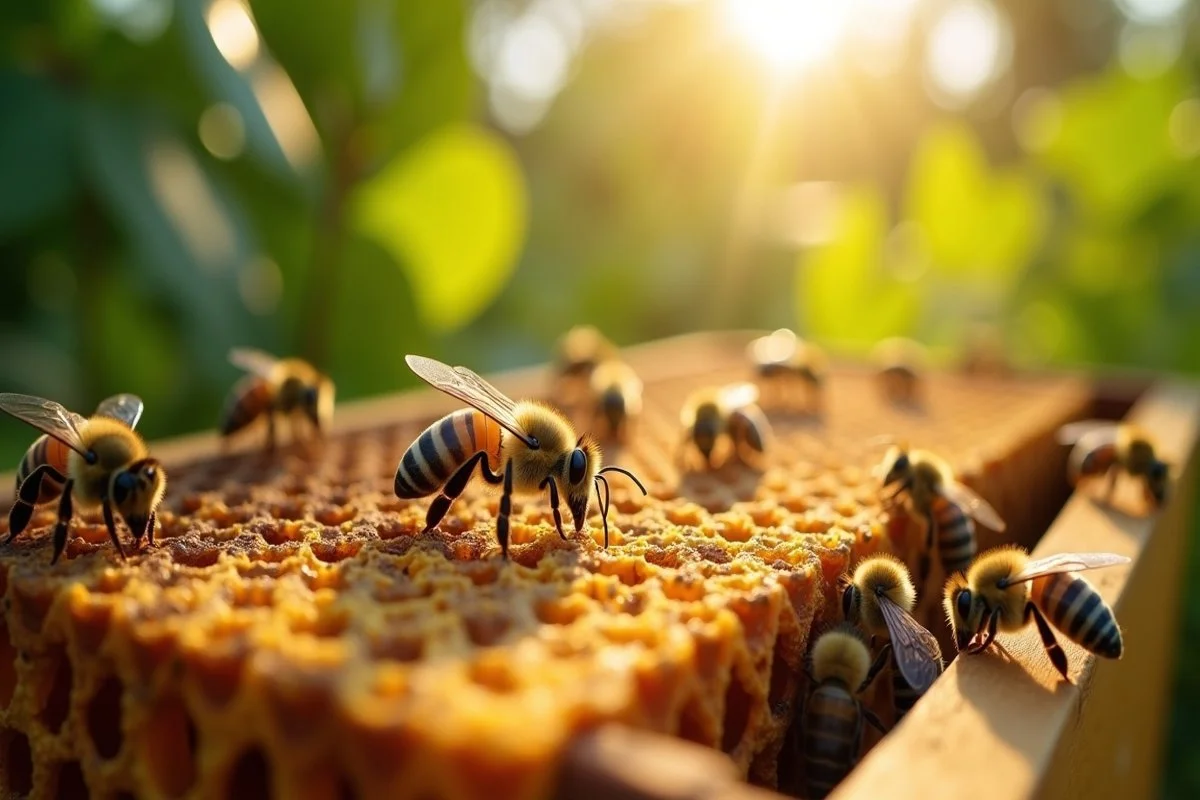Florida Summer Heat and Its Effect on Bee Behavior.
Florida is renowned for its warm, sunny climate, but summer temperatures in the Sunshine State can be exceptionally high. With daily highs often exceeding 90°F (32°C) and humidity levels that make the air feel even hotter, both humans and wildlife are affected by the intense heat. Among the creatures most impacted by Florida’s summer weather are bees—essential pollinators that play a critical role in supporting the state’s agriculture and natural ecosystems.
For homeowners, gardeners, and beekeepers, understanding how bees respond to Florida’s summer heat can help protect both property and pollinator health. Let’s take a closer look at how rising temperatures influence bee activity, behavior, and hive health, and why professional live bee removal is the best solution when bees move too close to home.
🐝 The Role of Bees in Florida’s Ecosystem
Florida summer heat influences honeybee behavior in the hive.
Bees are vital to Florida’s environment and economy. They pollinate crops such as citrus, blueberries, cucumbers, and watermelon, while also supporting wildflowers and native plants. Without bees, much of Florida’s agricultural production would decline, and biodiversity would suffer.
However, the same climate that allows Florida to produce crops year-round also places unique stress on bee populations, especially during the scorching summer months.
🌡️ How Heat Affects Bee Colonies
1. Thermoregulation Inside the Hive
Bees are remarkably skilled at regulating their hive temperature, which remains around 95°F (35°C) year-round, regardless of the weather outside. In Florida’s intense summer heat, bees engage in several strategies to prevent overheating:
Fanning Behavior: Worker bees line up near the hive entrance and fan their wings to circulate cool air inside.
Water Collection: Bees gather water and spread it throughout the hive. As the water evaporates, it cools the colony, functioning like natural air conditioning.
Bearding: On extremely hot days, bees cluster on the outside of the hive in a behavior known as “bearding,” which reduces crowding and helps ventilate the hive.
While these adaptations help bees survive, they also require significant energy, putting stress on the colony during Florida’s hottest months.
2. Changes in Foraging Patterns
When temperatures exceed 100°F (38°C), bees adjust their activity to avoid heat stress. Foraging activity is often limited to cooler hours:
Morning and Evening Flights: Bees are more active during early mornings and late afternoons when temperatures are moderate.
Midday Resting: Bees typically reduce activity during the hottest part of the day to conserve energy.
These changes can temporarily impact pollination rates, especially during prolonged heatwaves, which are becoming more common in Florida.
3. Heat Stress and Colony Health Risks
Excessive heat can weaken a bee colony in several ways:
Reduced honey production
Increased dehydration and energy use
Heightened vulnerability to pests like Varroa mites and small hive beetles
To support bee health, Florida beekeepers often provide shaded hive locations, ample water sources, and proper ventilation during summer.
🏡 Why Bees Seek Shelter in Homes During Summer
High temperatures can also influence where bees choose to build their hives. In Florida’s summer heat, bees often search for shaded, enclosed areas to establish colonies. Unfortunately, homes and buildings provide ideal shelter. Small gaps in soffits, attic vents, or wall voids may attract bees looking for a cool, protected nesting site.
Common Signs of Bees in Your Home:
Florida summer heat, showcasing their vital role in pollination
A steady stream of bees entering and exiting one spot on your property
Buzzing or humming noises inside walls or ceilings
Visible honeycomb or dripping honey
If you notice these signs, do not attempt DIY removal. Sealing entrances can trap bees inside, causing damage and potentially leading to dead bees and honey decay. Instead, contact a licensed live bee removal service to safely relocate the hive.
😡 Are Bees More Aggressive in Summer?
While bees are not naturally aggressive, they may appear more defensive during the summer for several reasons:
Resource Protection: Bees work harder to collect nectar and water in extreme heat, making them protective of their resources.
Hive Overcrowding: Summer colonies reach peak population sizes, increasing their territorial instincts.
Stress From Heat: Just like humans, bees can become irritable when overheated.
Most bees will not sting unless provoked. Avoiding sudden movements, wearing light-colored clothing, and steering clear of hive entrances can minimize risk.
🌸 Heat’s Impact on Nectar Sources
Florida’s summer heat doesn’t just affect bees directly—it also influences their food sources. Many flowering plants bloom earlier in the year, leading to reduced nectar availability in late summer. This scarcity may force bees to travel farther in search of resources, increasing their presence around homes and gardens.
Supporting pollinators is simple:
Plant heat-tolerant, nectar-rich flowers like sunflowers, zinnias, and basil.
Provide shallow water dishes with pebbles to help bees stay hydrated.
✅ Summer Bee Safety Tips for Florida Homeowners
Living in Florida means sharing your environment with pollinators. Here are some steps to prevent unwanted bee colonies around your home:
Seal Entry Points: Inspect your roofline, vents, and soffits for small gaps.
Avoid Chemical Sprays: Pesticides harm beneficial insects and may make colonies more aggressive.
Call Professionals: A certified bee removal company can relocate bees without harming them.
Create Pollinator-Friendly Zones: Plant flowers and set up bee-safe water sources away from structures.
Stay Calm Around Bees: Move slowly and give bees space to avoid triggering defensive behavior.
🌍 Climate Change and the Future of Florida’s Bees
Florida summers are becoming hotter and longer due to climate change. Rising temperatures, unpredictable rainfall, and habitat loss are increasing stress on pollinators. Proactive conservation and responsible removal practices are essential to ensure bees continue to thrive in Florida’s unique ecosystem.
By choosing eco-friendly bee removal over extermination, homeowners can help protect pollinator populations and maintain the state’s agricultural health.


